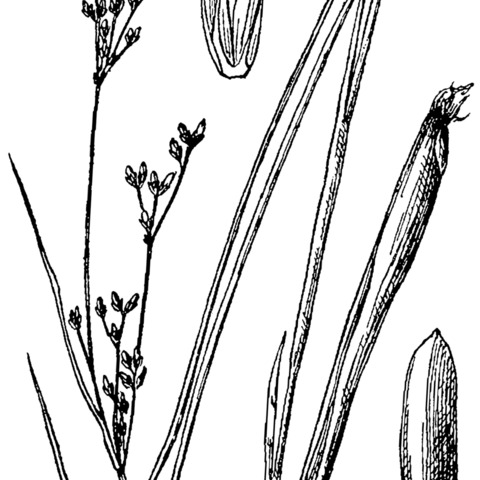Stems slender, densely cespitose, 1–5 dm; lvs erect, terete, septate, 1–2 mm thick; infl strict, 3–12 cm, 3–6 times as long as wide, with few–many erect or ascending branches and few–many 2–7-fld heads; fls eprophyllate; tep lance-subulate, 3-nerved, the sep 2.3–3.9 mm, the pet 2.6–3.2 mm; stamens 3 or sometimes 6; fr trigonously prismatic, much exceeding the perianth, 3.5–4.8 mm, abruptly tapering to the very short beak or merely acute, unilocular, with narrow partial partitions; seeds fusiform, 0.8–1.2 mm, the body occupying three-fifths of the total length; 2n=80. Marshes, wet meadows, and shores; Que. and N.S. to w. Ont. and Minn., s. to Mass. and N.Y., and in the mts. to N.C. and Tenn.


